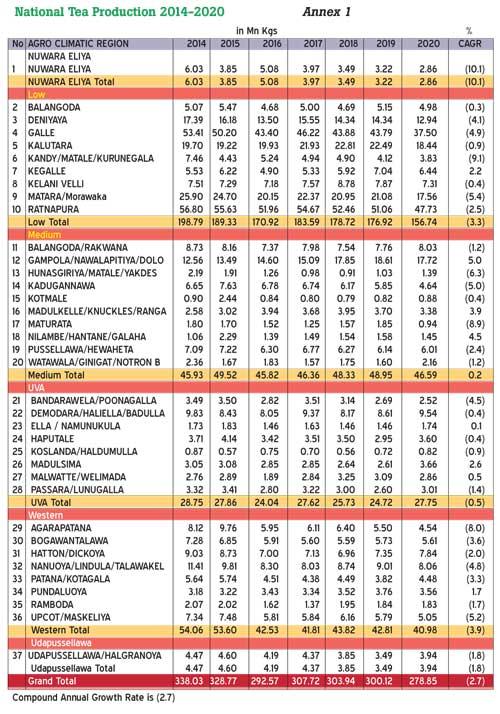05 Nov 2021 - {{hitsCtrl.values.hits}}
 As we all know, climate change (CC) is fuelling heat waves, flooding, drought, cyclones, etc. and these extreme weather patterns are costing globally US $ 320 billion a year. The main issue confronting the agriculture productivity is stemming from the fact that we have not been able to adopt mitigating strategies to arrest the adverse effects of CC.
As we all know, climate change (CC) is fuelling heat waves, flooding, drought, cyclones, etc. and these extreme weather patterns are costing globally US $ 320 billion a year. The main issue confronting the agriculture productivity is stemming from the fact that we have not been able to adopt mitigating strategies to arrest the adverse effects of CC.
As a result, there has been a persistent problem of low-income levels of farmer families, for which the policymakers have not been able to provide lasting solutions. Six years ago, nearly 200 countries agreed to implement individual plans to fight global warming in the historic 2015 Paris climate summit. Except for a slight drop because of the COVID-19 pandemic, carbon pollution is increasing and not decreasing.
Are we paying only lip service?
The world leaders have gathered at the 2021 United Nations Climate Change Conference (COP26) in Glasgow, Scotland. The new goals are: (i) countries are being asked to come forward with ambitious 2030 emission reduction targets that align with reaching net zero by 2050, (ii) encourage countries to protect and restore ecosystems, build defences, warning systems and resilient infrastructure and agriculture to avoid loss of homes, livelihoods and even lives, (iii) rich countries to spend US $ 100 billion a year in aid to poor countries requiring them to adopt to climate change strategies.
President Gotabaya Rajapaksa has stressed the need for an agricultural revolution that will not threaten nature, in an address and the President was speaking at a conference on ‘Rediscovering Nitrogen: Solutions and Synergies for Climate Change, Health, Biodiversity and Circular Economy’, a side-event ahead of COP26.
Sri Lanka has adopted the draft resolution on ‘nitrogen for life’ - 50 percent reduction of nitrogen waste by 2050 programme as well. UN environment programme director emphasised that every country should do more in Glasgow, especially China and the US.
Agricultural scientists’ view and evidence-based approach
Sri Lanka is blessed with sunshine and rain and thus giving the much-needed C, H, O, which are present in all soils as water and air and photosynthesis process will take in CO2 from the air, bring up water from the roots and using sunlight to create sugar – they basically create their own food for growth.
The other six main elements; N, P, K and S, Ca, Mg are also required in larger amounts than the remaining six, Fe, MR, B, Cu, Zn and Mo. These forms, N P, K are readily soluble and lost in solution if they are not fixed the action by farmers such as clearing, grazing and burning and due to harvesting of crop, the nutrient shortages are likely to occur and show deficiency syndrome of N, P, K. (Ceylon soil by S.N.U”. Fernando; January 1967)
On the other hand, scientists claim that soil organic matter is important and the accumulation of leaf litter (nitrogen fixing plants must be there) on a regular basis can substantially increase soil organic matter. As for tea crop, it is therefore, important to undertake “integrated soil fertility management strategies” going beyond the good agricultural practices (GAP).
As we all know, fertile soil is an absolute essentiality to achieve optimum plant growth. According to the TRI, the pioneering tea growers showed concerns about improving, conserving and maintaining soil fertility. “Clearly these pioneers realised that inorganic fertilisers alone cannot care for sol fertility.” (The TRI booklet on soil fertility; October 2016)
Productivity issues and low farmer income
The measure of outcome of soil fertility is obviously the yield of the produce. Statistically, it is proven that there has been a gradual decline of tea production in almost all agro-climatic sub districts over a period of last seven years (refer annex 1-CAGR is - 2.7 percent). The low productivity is mainly due to not adopting mitigating strategies of climate change and other factors such as inadequate replanting-infilling of tea and deficiencies in the labour: machine deployment, etc.
However, the yields will further decline if balanced nutrient is not provided at the right quantities at the right time. This is the basic scientific reasoning and as a result, an integrated balanced nutrient management is preferred during this interim period, along with producers undertaking soil fertility strategies, re/planting and infilling of tea and nitrogen fixing short rotation plants.
The recent extra ordinary gazette empowering the Tea Commissioner and the directives issued thereon will take care of mandating such implementation of the necessary development work in the large and medium-scale tea estates, including smallholders. Newly designed subsidy schemes are available to provide financial assistance and technical support.
‘People’ factor and converting R&D into commercialised products
This is not rocket science. However, it should be remembered that this type of major policy change deals with people; that’s why politics matter. Where do you get the balance nitrogen, if the adequate amount of organic or bio fertiliser is not supplied at the right time? Although the state banks have come up with loan schemes, due to its inherent weaknesses associated with imposing stringent terms and conditions, the disbursement of such loans is at slow pace. The domestic production of organic fertiliser for tea crop is increasing but at slow pace.
R&D work on nitrogen efficient nano fertiliser products developed locally several years back by SLINTEC with expertise from Prof. Nilwala Kottegoda has not materialised to make it a commercialised product. Small-scale field trials revealed that annual N requirement supplied through nanohybrids in low country and Uva tea fields showed a yield increment of 10-17 percent, compared with conventional recommendation. (Journal of Plant Nutrient; nanohybrid as an efficient source in tea plant, November 2019)
Why not spend some time, money and energy developing these products, including liquid bio fertiliser, bio char at commercial level without just resorting to application of inefficient N source?
The good news for some and bad news for others is that Sri Lanka has just started this journey and we all must support this endeavour to migrate into green socio-economic pattern, as the chemical fertiliser prices have skyrocketed at the world market and at present, the urea prices are around US $ 910 per MT and Ammonia Sulphate (21 percent N) is US $ 505 per MT.
Now that the subsidy for chemical fertiliser is removed, it would cost approximately Rs.8,500 per 50 kilos bag of urea-based tea mixtures, compared to Rs.1,600 one year ago. It is inevitable that we look for more and more organic and mineral source mixed fertiliser programme in order to achieve cost benefits at the tea supply chain, as there is a tipping point for achieving higher fob price for Ceylon Tea in the short term.
Fighting for survival of humanity
In my view, the current issue of minimising the use of chemical fertiliser should be viewed from that perspective and the Sri Lankan agricultural scientists, the practitioners and the government authorities must get together and come up with a middle path approach, rather than trying to maintain their fixed positions arguing for and against organic farming.
“We are fighting for the survival of humanity,” said EU representation at the Glasgow summit.
(Jayampathy Molligoda is Chairman of the SLTB)
23 Dec 2024 3 hours ago
23 Dec 2024 4 hours ago
23 Dec 2024 4 hours ago
23 Dec 2024 5 hours ago
23 Dec 2024 6 hours ago